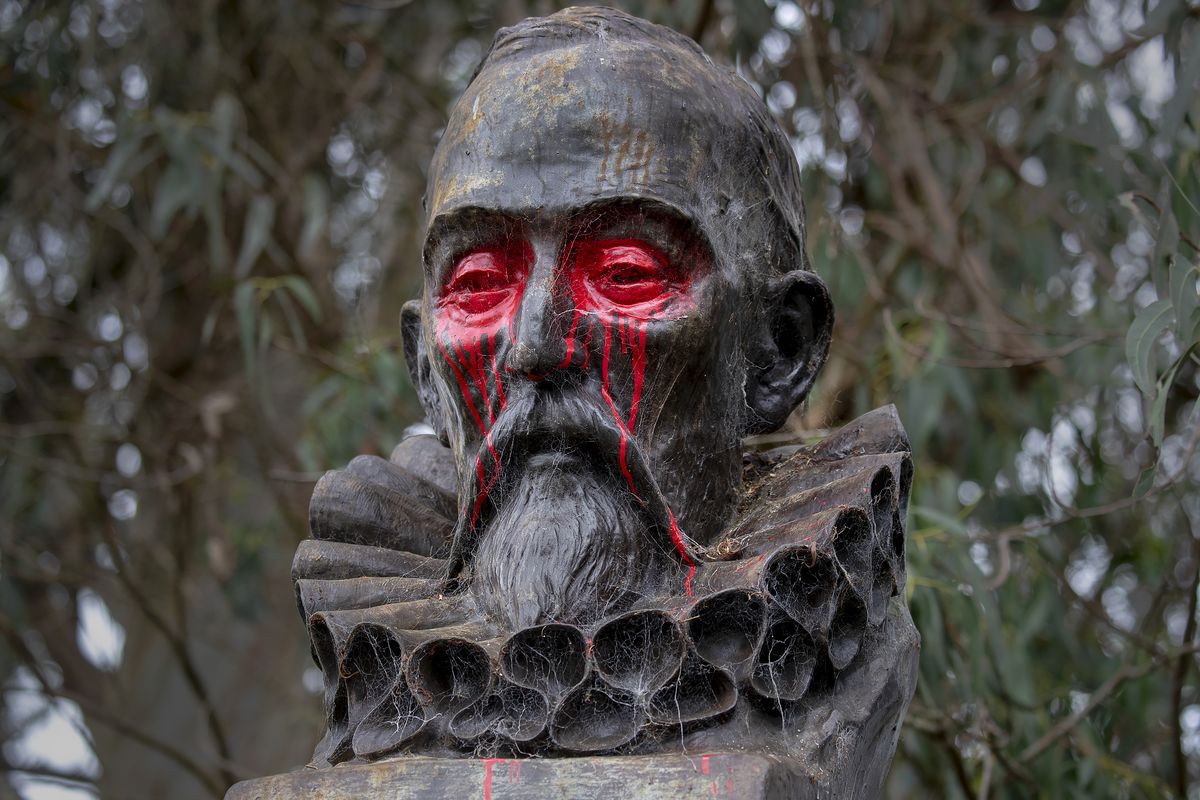Spanish colonial monuments fuel race strife in U.S. Southwest

RIO RANCHO, N.M. – Statues of Spanish conquistador Don Juan de Oñate are now in storage after demonstrators in New Mexico threatened to topple them. Protesters in California have pulled down sculptures of Spanish missionary Junipero Serra, and now schools, parks and streets named after Spanish explorers are facing uncertain futures.
As statues and monuments associated with slavery and other flawed moments of the nation’s history come tumbling down at both the hands of protesters and in some cases decisions by politicians, the movement in the American Southwest has turned its attention to representations of Spanish colonial figures long venerated by some Hispanics but despised by Native Americans.
Protesters say figures such as Oñate, who led early Spanish expeditions into present-day New Mexico, shouldn’t be celebrated. They point to Oñate’s order to have the right feet cut off of 24 captive tribal warriors after his soldiers stormed Acoma Pueblo. That attack was precipitated by the killing of Oñate’s nephew.
They say other Spanish figures oversaw the enslavement of Indigenous populations and tried to outlaw their cultural practices.
Some Hispanics who trace their lineage to the early Spanish settlers say removing the likenesses of Oñate and others amounts to erasing history – a complicated history both marred by atrocities against Indigenous people and marked by the arduous journeys that many families made for the promise of a new life or to escape persecution in Spain.
That history remains tightly woven into New Mexico’s fabric as many Native American Pueblos still are known by the names given to them by the Spanish and many continue to practice Catholicism – something even Pueblo leaders acknowledge.
“New Mexico is a special place for all of us. We are all neighbors. We share food, we work together, and in many cases, our family relations go back generations,” said J. Michael Chavarria, chairman of the All Pueblo Council of Governors and governor of Santa Clara Pueblo.
Earlier this month, demonstrators tried to tear down an Oñate statue outside an Albuquerque museum using chains and a pickax. A fight that broke out resulted in gunfire that injured one man. The next day, Albuquerque removed the statue and placed it in storage.
Another Oñate statue was removed by Rio Arriba County officials ahead of a planned protest that sought its removal, drawing praise from activists and some Pueblo leaders.
Albuquerque City Councilor Cynthia Borrego, who is Hispanic, acknowledged the sordid aspects of history during a city-sponsored prayer and healing event prompted by the protests.
“We also have to remember, those were times of war … but we can’t go back 500 years,” she said.
Daniel Ortiz, 58, a retired financial adviser in Santa Fe, can trace his family’s roots over 14 generations. He said the statues’ removals amount to anti-Hispanic sentiment and a dismissal of Hispanics’ unique contribution to area.
“This is the work of a small, radical Native American group, not our Pueblos,” Ortiz said. “They’ve hijacked the Black Lives Matter movement and our Anglo leaders are too scared to stand up to them.”
Ortiz is leading a online petition calling for the monuments’ return.
Others have taken to social media to call the vandalism an act of “Hispanicphobia,” linking it to anti-immigrant sentiment.
Even the Spanish Embassy in the U.S. has weighed in, saying that defending the Spanish legacy is a priority, and educational efforts will continue for “the reality of our shared history to be better known and understood.”